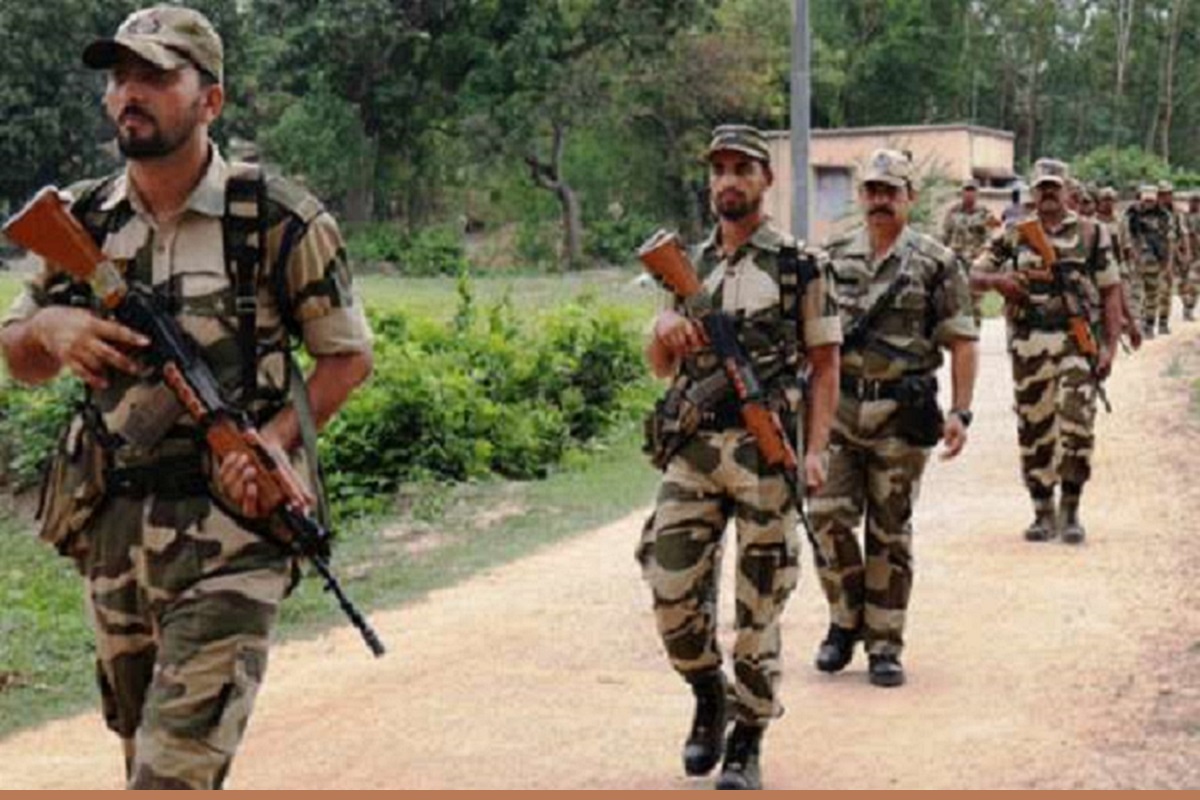Police seize ten firearms from vehicle in Kulti area, two arrested
A significant quantity of arms and ammunition was seized from the Kulti area on National Highway-19 by the Special Task Force (STF).
In what is being hailed as Chhattisgarh’s most decisive anti-Maoist operation, security forces eliminated 31 Maoist insurgents in a meticulously executed two-hour encounter on Friday.

(Image: Twitter/@ima7860)
In what is being hailed as Chhattisgarh’s most decisive anti-Maoist operation, security forces eliminated 31 Maoist insurgents in a meticulously executed two-hour encounter on Friday. The joint operation, involving over 1,000 personnel from the District Reserve Group (DRG) and the Special Task Force (STF), took place in the dense forests of the Maad region in Bastar, striking a crippling blow to the Maoist insurgency in the area.
The Intelligence and Planning
The groundwork for this successful operation began with a detailed intelligence report. The forces had received information about the presence of over 50 Maoists, part of the Maoist Company 6, known for its notoriety and strength in southern Chhattisgarh. The insurgents had set up a camp deep in the forested Thulthuli area, a natural fortress protected by steep hills and flowing rivers.
Advertisement
Instead of relying solely on human intelligence, the security forces used advanced technological surveillance to track the Maoist movement. Night-vision drones captured the insurgents’ precise location, allowing security forces to plan a coordinated strike.
A detailed strategy was developed by senior officials under the Inter-District Coordination framework. The plan involved the simultaneous deployment of forces from the Dantewada and Narayanpur districts to ensure the Maoists had no escape route. The operation was set to unfold under the cover of darkness, with forces launching the attack before dawn.
Executing the Operation
On the night of October 3, over 1,000 DRG and STF personnel were mobilised from their respective bases in Dantewada and Narayanpur. The task was physically daunting. Heavy rainfall, treacherous terrain, and the possibility of Maoist traps made the journey difficult. The forces had to cross hills, rivers, and dense forests to reach their target. However, the rain also worked to their advantage, concealing their movements from the Maoists.
On October 4, at around 1 pm, the forces closed in on the Maoist camp. The security personnel had surrounded the area without the insurgents realising they were trapped. The DRG, known for its guerrilla warfare training and knowledge of the terrain, initiated the attack with precise fire, taking down seven Maoists in the first few minutes. The Maoists, caught off-guard, attempted to flee but ran straight into the STF teams waiting on the other side.
A Decisive Victory
In less than two hours, 31 Maoists lay dead. The forces faced minimal resistance as their encirclement strategy worked flawlessly. The insurgents, who had fortified themselves in the Thulthuli area, were unable to counter the swift and coordinated strike. Reports indicate that many Maoists were unable to retrieve their fallen comrades or their weapons.
Bastar Inspector General (IG) P Sundarraj confirmed that the forces recovered a significant cache of arms, including Light Machine Guns (LMGs), AK-47s, Self-Loading Rifles (SLRs), and INSAS rifles, indicating the Maoists were well-armed, and preparing for a major offensive.
The operation also dealt a significant blow to the Maoist leadership. Among the dead is believed to be Niti, a leader of the Eastern Bastar Division Committee, who carried a bounty of Rs 8 to 10 lakh on her head. This marks a major victory in the effort to dismantle Maoist leadership in the region.
Technological Edge and Precision
The success of this operation can be attributed to the use of advanced technology, including night-vision drones, which allowed the forces to monitor Maoist movements without detection. The intelligence gathered through these drones enabled precise planning and execution, ensuring the forces could surround the camp and take the insurgents by surprise.
This technology, combined with the deep knowledge of local terrain possessed by the DRG and STF personnel, proved to be the game changer. The operation marks a significant shift in the way security forces are tackling Maoist insurgency, moving from reactive strategies to proactive, intelligence-driven operations.
The Aftermath
This encounter has been described as a landmark victory in the fight against Maoist insurgency. It sends a strong message to the insurgents, showing that their safe havens in the dense forests of Bastar are no longer impenetrable. With 31 Maoists killed and a large arsenal of weapons recovered, the insurgency has suffered a major blow.
Search operations continue in the region, with security forces ensuring that any remaining insurgents are apprehended. The total number of Maoists killed could rise as the forces continue to sweep the area.
This operation, now regarded as the largest anti-Maoist strike in Chhattisgarh’s history, demonstrates the evolving strength and capability of India’s security forces. The coordination between districts, the use of cutting-edge technology, and strategic planning resulted in one of the most decisive victories in the ongoing conflict. As security forces return from the field, further details are expected. This operation has already been recognised as a turning point in the battle against Maoist insurgency in southern Chhattisgarh.
Advertisement